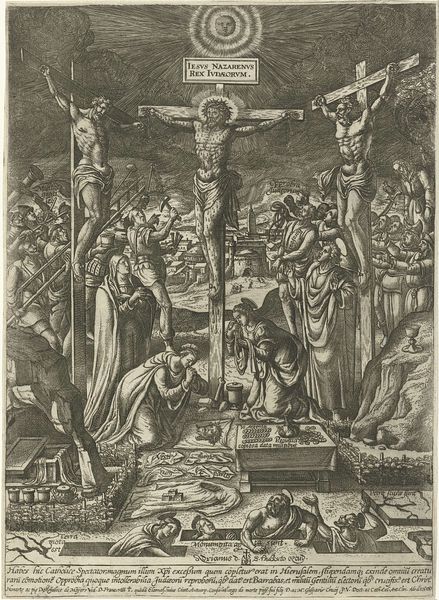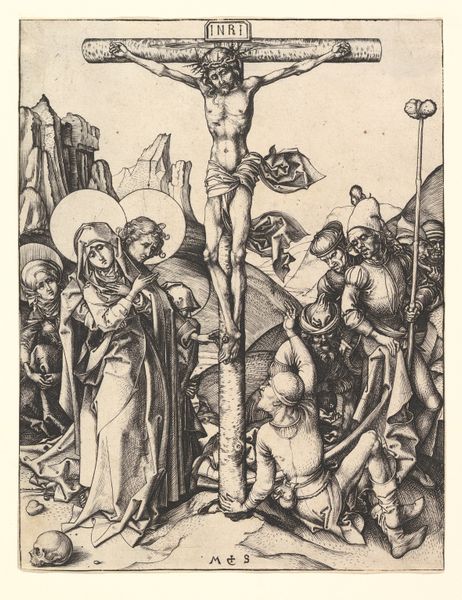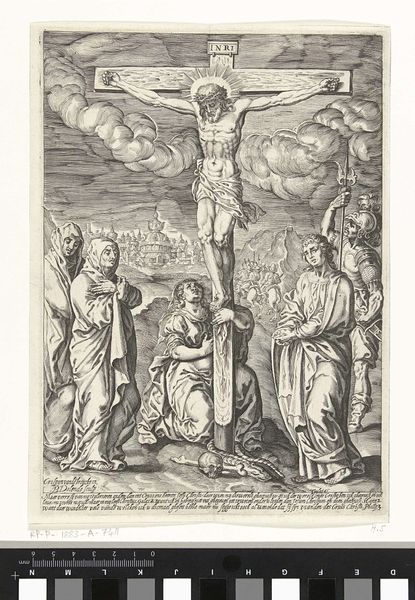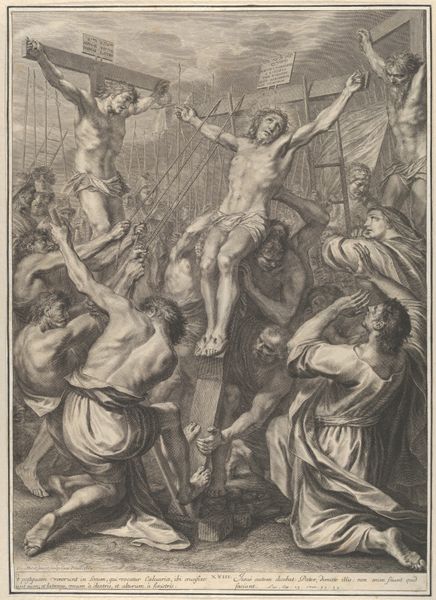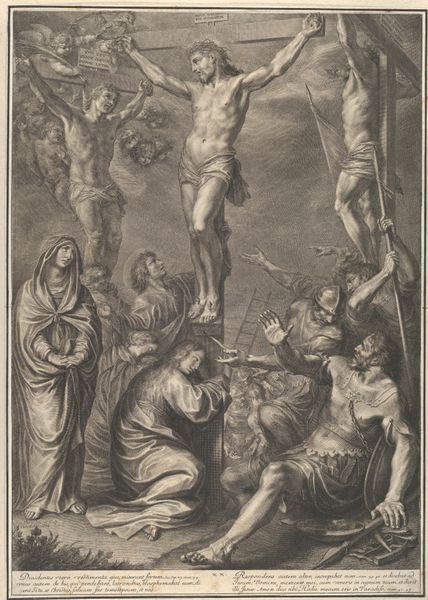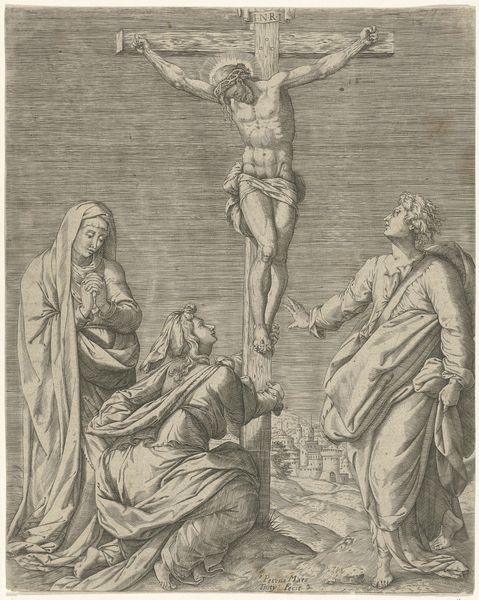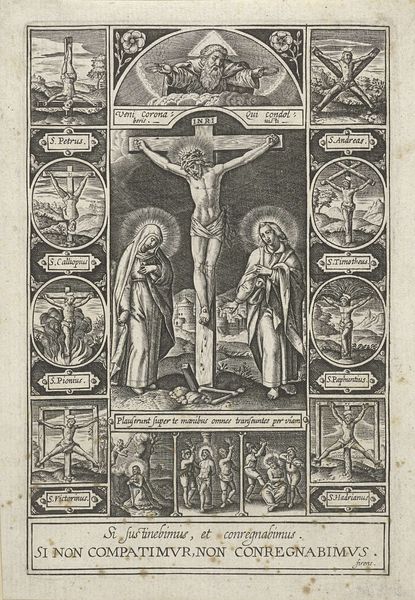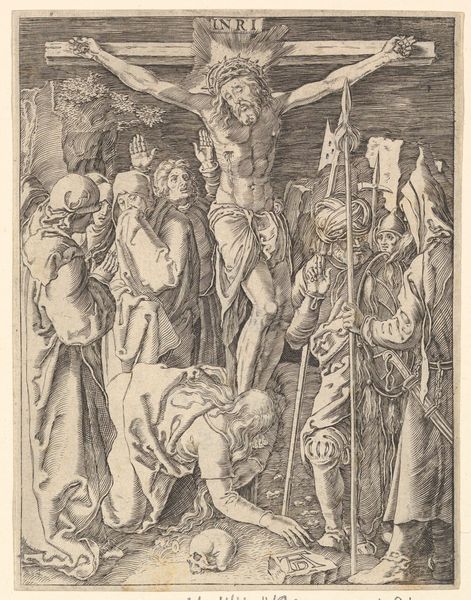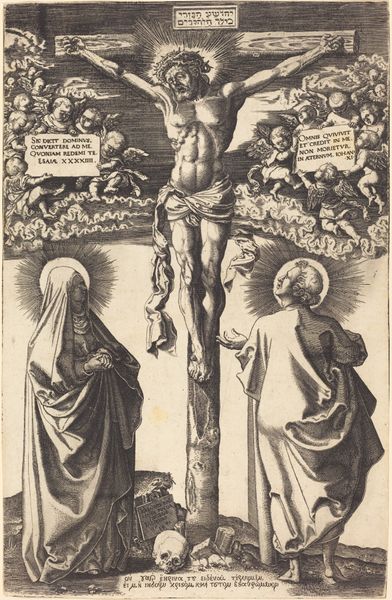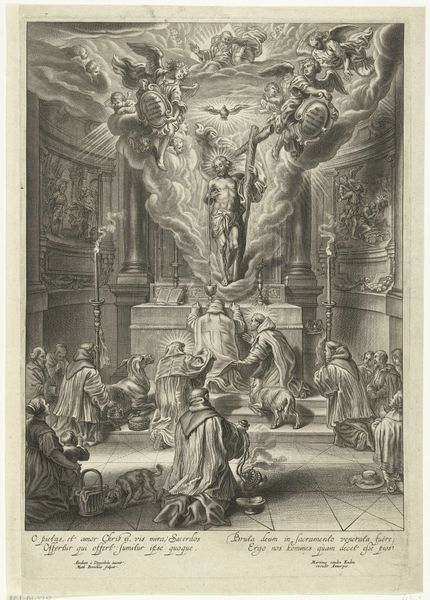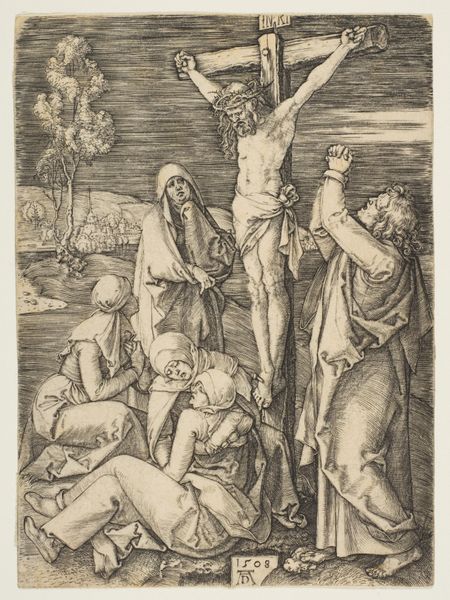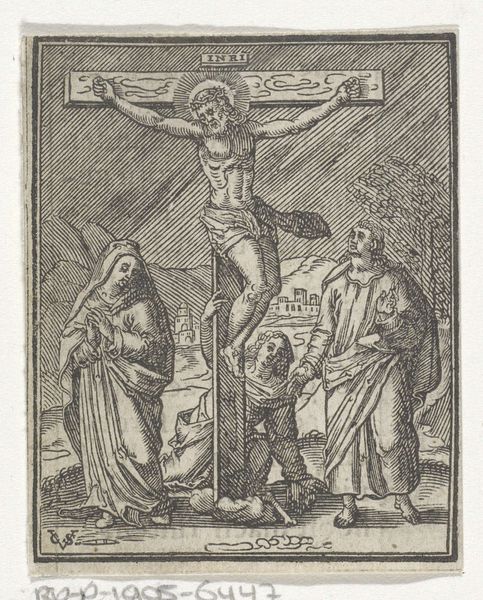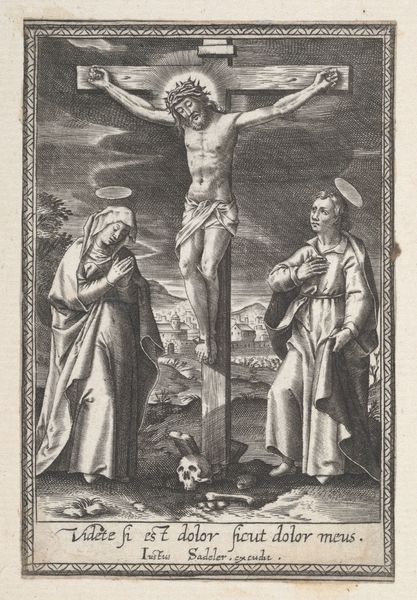
print, engraving
#
ink drawing
#
baroque
# print
#
figuration
#
pencil drawing
#
history-painting
#
engraving
Dimensions: 359 mm (height) x 279 mm (width) (bladmaal)
Curator: This engraving is titled "The Seven Bloodlettings of Christ," likely created between 1609 and 1672 by an anonymous artist. It resides here at the SMK, Statens Museum for Kunst. Editor: It’s intense. A visually striking piece. So much happening, so many figures meticulously rendered, all variations on violence surrounding the central, crucified Christ. The artist has definitely manipulated the materiality of printmaking to evoke an almost palpable sense of suffering. Curator: Indeed, it’s a fascinating blend of Baroque sensibilities with what appears to be a devotional agenda. The image attempts to convey a theological concept – the multiple shedding of Christ’s blood throughout his life, from circumcision to crucifixion, mapping out the symbolic value of sacrifice. How do you see the socio-political context affecting this kind of imagery? Editor: Well, engravings were often a more accessible and reproducible art form, widely disseminated to a public who might not have had access to large-scale paintings. Therefore, these ‘bloodlettings’ weren't simply theological—they became visual tools, impacting societal perception. Also, note the stark class difference. The people executing him are of a lower status than, say, the holy figures tending to the newborn Jesus; which seems very intentional in who had power to do what. Curator: Exactly. Consider the institutional power dynamics: the church commissioning these images, the patrons supporting the artists, and the broader cultural anxieties that might have fueled a need for such graphic representations of suffering and redemption. Even the architectural backgrounds – the formal, almost staged setting– contributes to a sense of authority. Editor: And the meticulous line work—it would take a master craftsman countless hours. The act of creation becomes a devotional exercise itself. How that labor is distributed, who benefits from it, is crucial in unpacking its impact. This would probably take ages by hand, and probably why this kind of work fell off from common media once it was faster to create different art types. Curator: I agree. What truly resonates is how such a small object, made with relatively humble materials, has carried potent religious and political messages across centuries and continents. Editor: The convergence of medium, message, and its accessibility speaks volumes about how art really functions as a force for change, regardless if for bad or good. Thanks for letting me pick your brain on this, I feel much more knowledgeable of how to think of it.
Comments
No comments
Be the first to comment and join the conversation on the ultimate creative platform.
